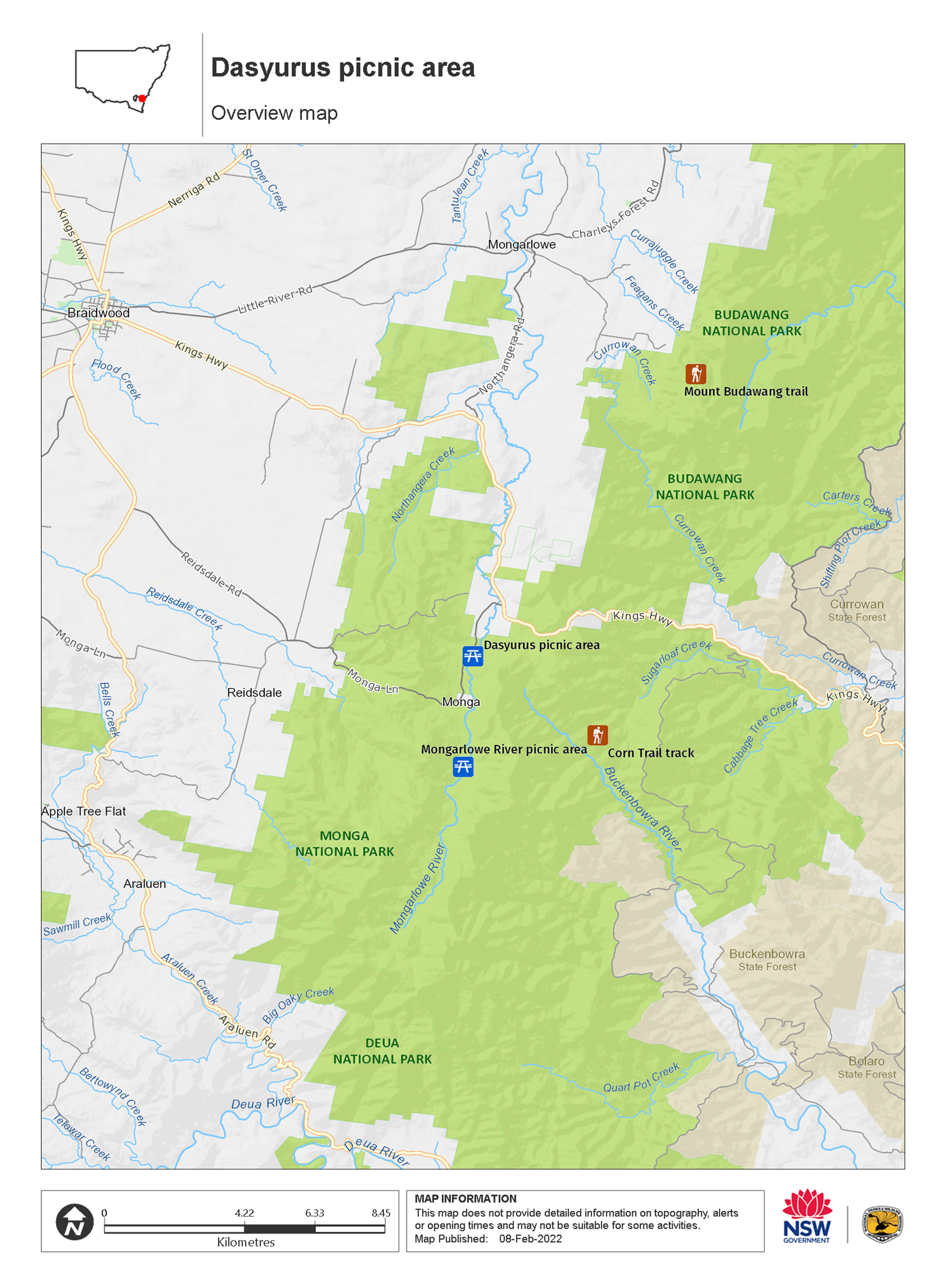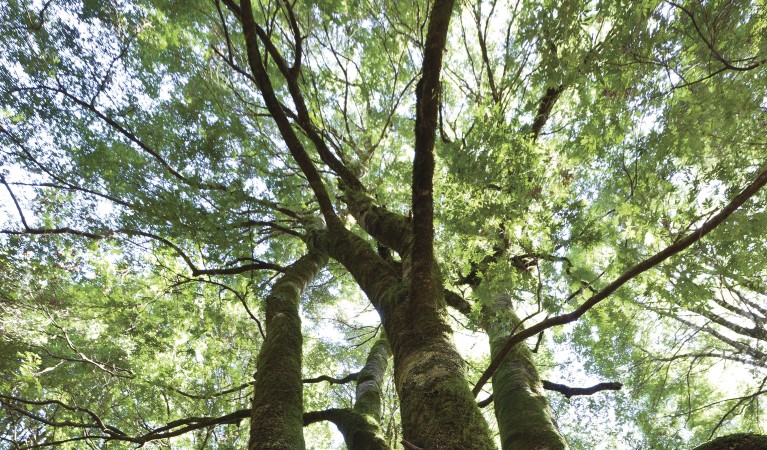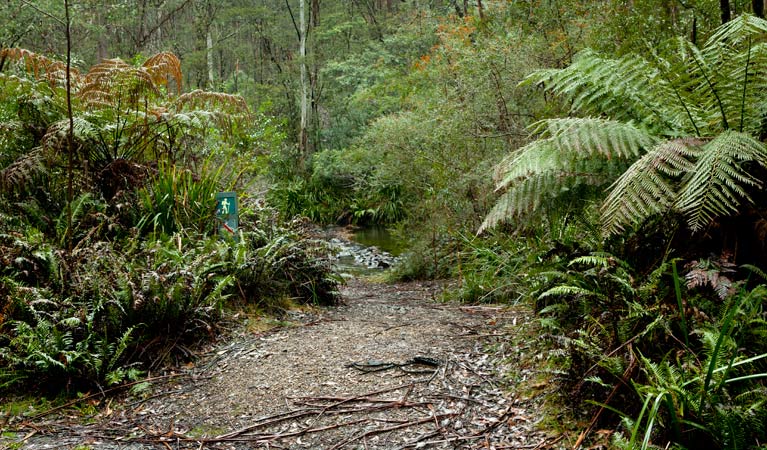Overview
Dasyurus picnic area is a tranquil spot to stop on your drive to the coast from Canberra or a great day trip from Batemans Bay or Braidwood.
- Type
- Picnic areas
- Where
- 215 River Forest Road, Monga, NSW, 2622 - in Monga National Park in South Coast, Country NSW
- Accessibility
- Medium
- What to
bring - Hat, sunscreen, drinking water
- Please note
- The weather in this area can be unpredictable, so please ensure you’re well-prepared for your visit.
- There is limited mobile reception in this park
- Remember to take your binoculars if you want to bird watch
Dasyurus picnic area is a peaceful picnic spot, set on the banks of Mongarlowe River. It’s a tranquil place to stop on your drive to the coast from Canberra or a great day trip from Batemans Bay or Braidwood.
Pack a thermos and enjoy a hot cuppa as you admire the superb natural surroundings. Take the kids down to the river to see if you can spot a platypus feeding in the river pools. Try your luck fishing, or just sit by the riverbank and relax as you listen to the gentle waters flowing by.
If you feel like stretching your legs, step back in time along Corn Trail walking track, which starts from the picnic area. You’ll be following a route that has been used for thousands of years on this challenging 6-hour hike through warm temperate rainforest and eucalypt forest.
Nearby
-

Corn Trail walking track
Corn Trail walking track is a historic trail for hikers and horse riders to traverse a wide variety of landscapes and follow in the footsteps of the past.
Map

Map legend

Local alerts
For the latest updates on fires, closures and other alerts in this area, see https://www.nationalparks.nsw.gov.au/things-to-do/picnic-areas/dasyurus-picnic-area/local-alerts
General enquiries
- National Parks Contact Centre
- 7am to 7pm daily
- 1300 072 757 (13000 PARKS) for the cost of a local call within Australia excluding mobiles
- parks.info@environment.nsw.gov.au
Park info
- in Monga National Park in the South Coast and Country NSW regions
Monga is always open but may have to close at times due to poor weather or fire danger.
Visitor info
All the practical information you need to know about the Dasyurus picnic area.
Getting there and parking
Get driving directions
Dasyurus picnic area is in the northern precinct of Monga National Park. To get there:
- Take the first left turn, approximately 200m after entering the park.
- Follow this road 400m to arrive at the picnic area
Road quality
- Unsealed roads
Vehicle access
- 2WD vehicles
Weather restrictions
- All weather
Parking
Parking is available in a small gravel carpark at Dasyurus picnic area. It can be a busy place on the weekend, so parking might be limited
Best times to visit
There are lots of great things waiting for you in Monga National Park. Here are some of the highlights.
Autumn
Take in the sweet perfumes of the plumwood trees in flower.
Spring
See the distinctive bright red colour of the Monga waratah in bloom along the banks of Mongarlowe River.
Summer
Enjoy a picnic under the shade of the eucalypt forest and unwind to the sounds of the gently flowing water at Mongarlowe River picnic area.
Winter
Embark on the historic Corn Trail walking track and experience the diverse natural landscapes of Monga.
Weather, temperature and rainfall
Summer temperature
Average
10°C and 26°C
Highest recorded
41.1°C
Winter temperature
Average
0°C and 11°C
Lowest recorded
-9.2°C
Rainfall
Wettest month
March
Driest month
July
The area’s highest recorded rainfall in one day
663.9mm
Facilities
- Drinking water is not available in this area, so it’s a good idea to bring your own.
- You are encouraged to bring gas or fuel stoves, especially in summer during the fire season.
Toilets
There's an ambulant toilet at the picnic area
Picnic tables
Barbecue facilities
- Fire rings (bring your own firewood)
Carpark
Step-free access
The picnic area is flat and step-free, but there are no pathways. You'll need to cross over hard-packed ground and grass to reach the facilities.
Maps and downloads
Accessibility
Disability access level - medium
Dasyurus picnic area is flat and step-free, but there are no pathways. You'll need to cross over flat grass and hard-packed ground to reach the facilities.
There's an ambulant toilet.
Permitted
Fishing
A current NSW recreational fishing licence is required when fishing in all waters.
Prohibited
Gathering firewood
Firewood is not supplied and may not be collected from the park.
Pets
Pets and domestic animals (other than certified assistance animals) are not permitted. Find out which regional parks allow dog walking and see the pets in parks policy for more information.
Smoking
NSW national parks are no smoking areas.
Learn more
Dasyurus picnic area is in Monga National Park. Here are just some of the reasons why this park is special:
A glimpse of trading history

Monga National Park is significant for its natural wonders and its historic heritage. Corn Trail walking track, which is today enjoyed by bushwalkers and horse riders, was the first trade route between the Buckenbowra Valley farmlands near the coast and the early European settlements on the tablelands near Braidwood. Further settlement came to the area in the 1840s, with the establishment of the timber trade and gold mining. The sawmill at Monga provided timber for Braidwood and the establishment of Canberra in the 1900s, with logging continuing in the area until 1987.
- Corn Trail walking track Corn Trail walking track is a historic trail for hikers and horse riders to traverse a wide variety of landscapes and follow in the footsteps of the past.
Aboriginal culture

For over 14,000 years, the Yuin and Walbunja people have lived around the valleys of Clyde, Deua and Buckenbowra rivers. Walkers and horse riders can walk in their footsteps on Corn Trail walking track, which was one of the trails used by Aboriginal people to travel between the coast and the tablelands. There are many Aboriginal cultural sites in the park where stone artefacts, fire beacons and old campsites have been found.
Unique plantlife

Many of the plants you'll find in the cool, temperate rainforests of Monga are millions of years in the making. Related to the plants from the super continent Gondwana, they present a unique window to the past. The plumwood trees and soft tree ferns you see in the park are closely related to pollen fossils found in Antarctica. Some plumwood trees here have widths of up to 4m and are thought to be thousands of years old. Wander along the banks of Mongarlowe River and you'll also see the distinctive bright red flowers of the Monga waratah.
- Dasyurus picnic area Dasyurus picnic area is a tranquil spot to stop on your drive to the coast from Canberra or a great day trip from Batemans Bay or Braidwood.
- Mongarlowe River picnic area Under the shade of eucalypt forest, this sheltered picnic site is an ideal place to start exploring Monga's rich habitats with easy strolls, swimming, and birdwatching.
Plants and animals protected in this park
Animals
-

Short-beaked echidna (Tachyglossus aculeatus)
One of only 2 egg-laying mammals in the world, the short-beaked echidna is one of the most widespread of Australian native animals. Covered in spines, or quills, they’re equipped with a keen sense of smell and a tube-like snout which they use to break apart termite mounds in search of ants.
-

Platypus (Ornithorhynchus anatinus)
One of the most fascinating and unusual Australian animals, the duck-billed platypus, along with the echidna, are the only known monotremes, or egg-laying mammals, in existence. The platypus is generally found in permanent river systems and lakes in southern and eastern NSW and east and west of the Great Dividing Range.
-

Grey-headed flying-fox (Pteropus poliocephalus)
The grey-headed flying fox is Australia's largest native bat, with a wingspan up to 1m. This threatened species travels up and down south-eastern Australia and plays a vital role in pollinating plants and spreading seeds in our native forests.
-

Spotted-tailed quoll (Dasyurus maculatus)
The spotted-tailed quoll is the largest remaining carnivorous marsupial on the Australian mainland. It’s protected as a vulnerable species in NSW.
Plants
-

Waratah (Telopea speciosissima)
The beautiful waratah is not only the NSW floral emblem, it's also one of the best-known Australian native plants. This iconic Australian bush flower can be found on sandstone ridges around Sydney, in nearby mountain ranges and on the NSW South Coast. The waratah has a vibrant crimson flowerhead, measuring up to 15cm across, and blossoms in spring.

